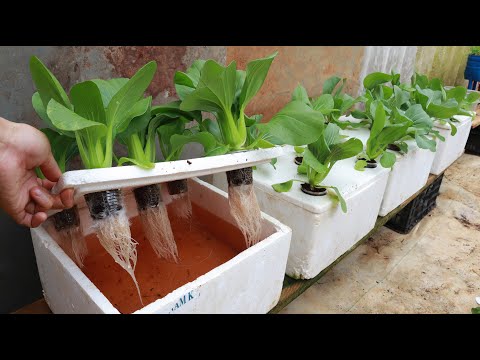Hydroponics, the art of growing plants without soil, is becoming increasingly popular among home gardeners, especially those with limited space or challenging soil conditions. A hydroponic vegetable garden uses nutrient-rich water to grow vegetables faster and often healthier than traditional gardening methods. This guide will walk you through the basics of setting up your own hydroponic garden at home and provide tips to make the process easy for beginners.
**Why Choose Hydroponics?**
Hydroponic gardening offers several advantages over traditional gardening. Firstly, it eliminates the worry about soil quality. Plants grown hydroponically receive their nutrients from a water solution, ensuring they have exactly what they need to grow efficiently. Secondly, plants in hydroponic systems grow faster due to their direct access to nutrients. Additionally, these systems use up to 90% less water since the water in the system is recirculated and not lost through drainage as in conventional gardening.
**Getting Started**
To begin your hydroponic vegetable garden, you need a few basic components:
1. **Hydroponic System**: There are several types of hydroponic systems available for home gardeners including wick systems, deep water culture (DWC), nutrient film technique (NFT), and aeroponics. Beginners often find that DWC or wick systems are the easiest to manage.
2. **Lighting**: If you don’t have access to abundant natural light, you’ll need artificial lights like LED grow lights or fluorescent bulbs.
3. **Nutrients**: Hydroponic plants require a water-soluble nutrient solution specifically designed for hydroponic gardening.
4. **Seeds or Seedlings**: You can choose from a variety of vegetables such as lettuce, tomatoes, cucumbers, and peppers.
**Step-by-Step Guide**
1. **Set Up Your Hydroponic System**: Follow the manufacturer’s instructions to set up your chosen system. Make sure it is stable and located in an area with appropriate lighting.
2. **Prepare the Nutrient Solution**: Mix the hydroponic nutrients with water as directed on the packaging and add them to your system.
3. **Plant Your Seeds or Seedlings**: Place seeds or young seedlings in the growing medium used by your system such as rockwool cubes or clay pebbles.
4. **Monitor and Maintain**: Keep an eye on your plants and check pH levels regularly — most vegetables prefer a pH between 5.5 and 6.5. Adjust the nutrient levels as needed and change out the water every two weeks.
**Tips for Success**
– Regularly check that all equipment is working properly especially pumps in DWC systems which can be prone to malfunction.
– Use high-quality seeds specifically meant for indoor or hydroponic growth.
– Clean your system between growing cycles to prevent any disease build-up.
**Common Challenges**
Some common challenges beginner face include maintaining proper pH levels managing nutrient concentrations effectively dealing with pests even indoors these concerns can be managed through vigilant care frequent monitoring.
**Harvesting Your Vegetables**
When plants have matured which generally happens faster than in soil-based gardens harvest them by gently removing them from the system Wash all vegetables thoroughly before eating.
In conclusion growing a hydroponic vegetable garden at home is not only feasible but also highly rewarding It allows individuals living in apartments or homes without yards to engage in gardening Additionally it can be a fun family project that teaches kids about science and sustainability With basic equipment some patience beginners can cultivate lush productive vegetable gardens right from their homes

